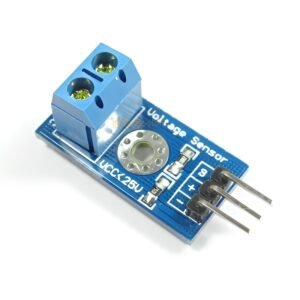Description
- Operating Principle:
- Hall Effect: Based on the principle discovered by Edwin Hall, where a voltage is induced across a conductor perpendicular to the direction of current flow when subjected to a magnetic field.
- Solid-State Design: Employs semiconductor technology to detect changes in magnetic field strength, offering high sensitivity, fast response times, and immunity to mechanical wear.
- Detection Modes:
- Magnetic Field Strength: Measures the intensity of magnetic fields, providing quantitative data about the strength of nearby magnets or magnetic materials.
- Magnetic Field Polarity: Determines the polarity (north or south) of magnetic fields, allowing for identification and differentiation of magnetic sources.
- Features and Specifications:
- Sensitivity: Specifies the sensor’s ability to detect changes in magnetic field strength, typically expressed in millivolts per gauss (mV/G) or tesla (T).
- Operating Range: Defines the range of magnetic field strengths within which the sensor operates reliably, ensuring accurate detection and measurement.
- Output Type: Provides digital or analog output signals proportional to the detected magnetic field strength, compatible with microcontrollers, PLCs, and data acquisition systems.
- Applications:
- Position Sensing: Used in rotary encoders, linear encoders, and proximity sensors for accurately determining the position of moving objects relative to magnetic markers or targets.
- Speed Detection: Employed in speed sensors for detecting the rotational speed of magnetic gears, shafts, or wheels in automotive, industrial, and robotics applications.
- Proximity Sensing: Integrated into proximity switches, door sensors, and security systems for detecting the presence of ferrous objects or magnetic field disturbances.
- Installation and Configuration:
- Mounting Options: Can be mounted directly onto PCBs, attached to brackets or housings, or embedded within magnetic assemblies for specific application requirements.
- Calibration: May require calibration procedures to adjust sensitivity, offset, or threshold levels for optimal performance and accuracy in different operating conditions.
- Interfacing: Interfaces with external circuitry using standard electrical connections, with options for digital communication protocols (e.g., I2C, SPI) or analog voltage output.
- Considerations:
- Magnetic Field Environment: Consider the presence of external magnetic fields, ferrous materials, and electromagnetic interference (EMI) in the sensor’s operating environment, which may affect its performance.
- Temperature Sensitivity: Evaluate the sensor’s temperature coefficient and operating temperature range to ensure stable and reliable operation across a wide range of temperatures.
- Power Supply: Provide a stable power supply within the sensor’s specified voltage range, considering power consumption and transient voltage protection requirements.
- Mounting Location: Choose an appropriate mounting location and orientation for the sensor to optimize magnetic field detection and minimize interference from nearby objects or components.




